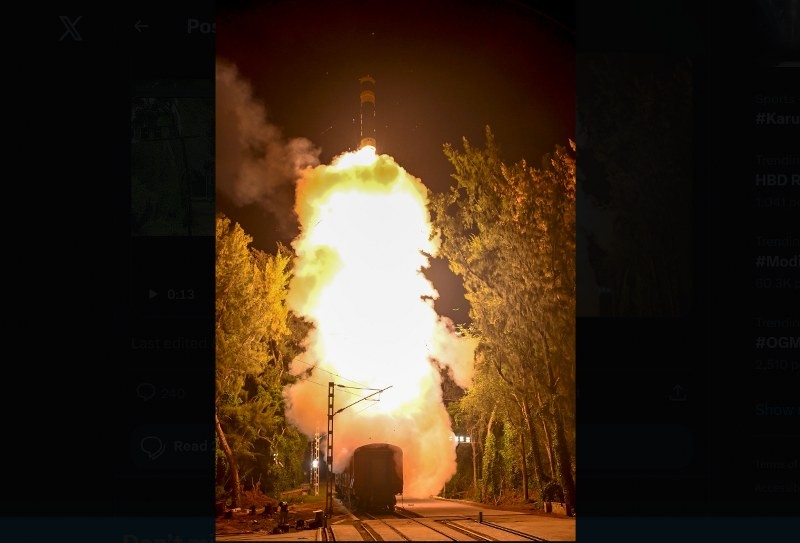
India on Thursday successfully test-fired the intermediate-range, nuclear-capable Agni Prime missile from a rail-based launcher, Defence Minister Rajnath Singh announced on X, sharing video of the lift-off.
The canisterised missile, with an estimated range of 2,000 km, was launched from a specially prepared rail-mounted bed towed by an Indian Railways locomotive — a trial that marks a step-change in India’s missile mobility.
While India regularly conducts missile tests, this launch stands out because it places New Delhi in a small group of nations — including the United States, Russia and China — that have demonstrated rail-based mobile strike capability. North Korea claimed similar launches in 2021.
The Defence Minister described the event as a “first-of-its-kind launch … from a specially designed, rail-based mobile launcher,” adding that the system “has the capability to move on the rail network without preconditions, allowing shorter reaction time and cross-country mobility.”
A rail-based firing option provides multiple strategic advantages: launchers can disperse and manoeuvre across the 70,000-km Indian rail network, improve survivability through concealment, and operate even in areas with limited road access. Tunnels and remote rail links can serve as concealed firing points, complicating adversary targeting.
Officials said the trial validated the Agni Prime’s canisterisation, mobility and launch-from-motion concepts. They added that further testing and operational evaluation would shape future deployment decisions.


